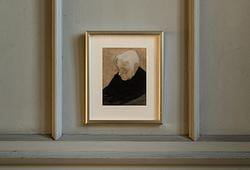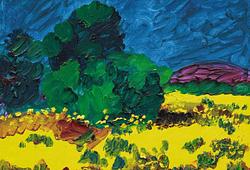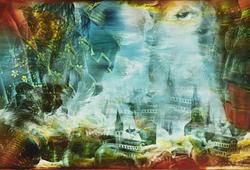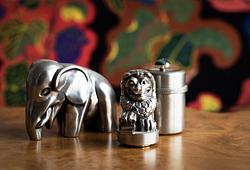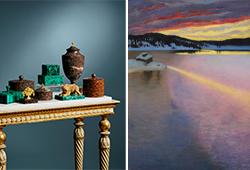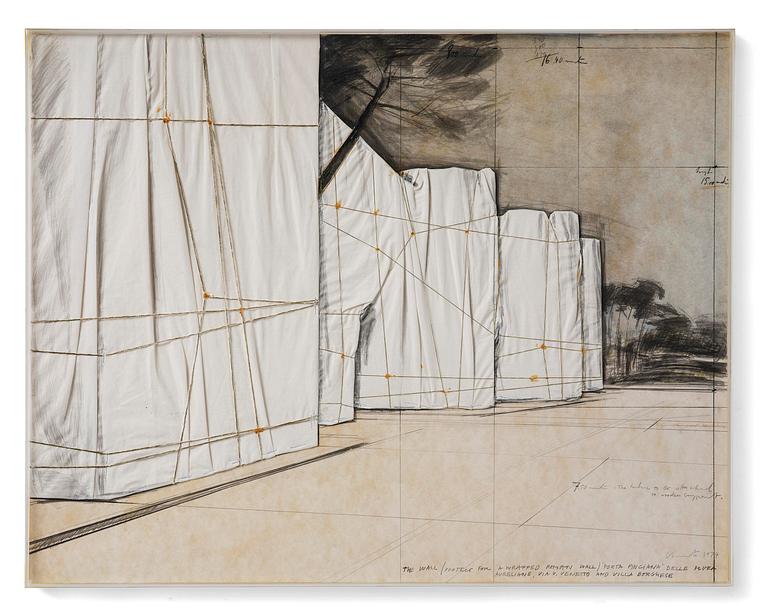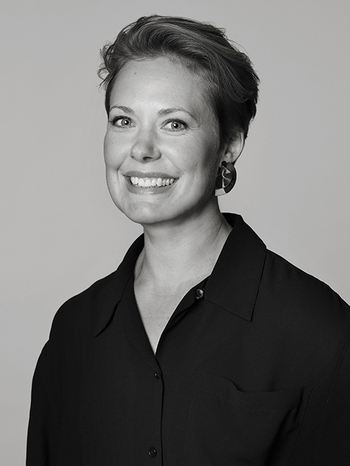Christo Vladimirov Javacheff
"The Wall / Project for a Wrapped Roman Wall"
Signed Christo and dated 1974. Charcoal, graphite, pastel, fabric and twine on paper mounted on panel 54 x 71.5 cm. Mounted in plexi glass frame 56.5 x 71.5 cm. A photograph 54 x 70 cm, mounted in plexi glass frame, signed Christo and dated 1974, accompanies the work.
Provenance
Acquire from the artist.
Literature
Direction des Musées de Nice, 1989,"Christo, from the Lilja collection". The project mentioned p. 96ff, compare illustration The Wall, illustrated p. 99.
More information
In the early months of 1974, Christo and Jeanne-Claude carried out a bold transformation of Rome's cityscape. A 250-meter stretch of the ancient Aurelian Walls, built under Emperor Aurelian in the 3rd century AD, was wrapped in polypropylene fabric and rope. Both sides of the wall were covered, as were the top and the iconic arches, three of which were open to heavy traffic and one to pedestrians. The location was well chosen, at the end of Via Veneto, one of Rome's busiest avenues, next to the gardens of Villa Borghese.
The installation was part of the Contemporanea exhibition, held in the underground garage of Villa Borghese and curated by Achille Bonito Oliva. With remarkable logistical precision, completed in just four days by some forty workers, the work remained in place for only 40 days before being dismantled and the materials recycled.
Christos' art avoids solemn or didactic interpretations. Instead, it invites the viewer to rediscover familiar forms through changed contexts. As he himself once put it: “I am an artist, and I must have courage... I believe it takes much more courage to create things that will disappear than to create things that will last.” His works, transient and self-effacing, exist ultimately in memory, preserved through preparatory sketches, models, and photographs. “The Wall / Project for a Wrapped Roman Wall” was more than an aesthetic spectacle; it was an urban spectacle that transformed one of Rome's ancient monuments. The artwork united the contemporary and the historical; by concealing the familiar, the transformed work transformed the everyday cityscape into a temporary place of wonder.




